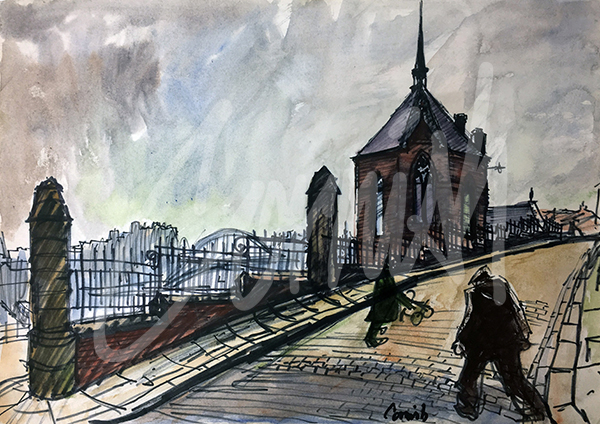Latest News
The Pony Putter
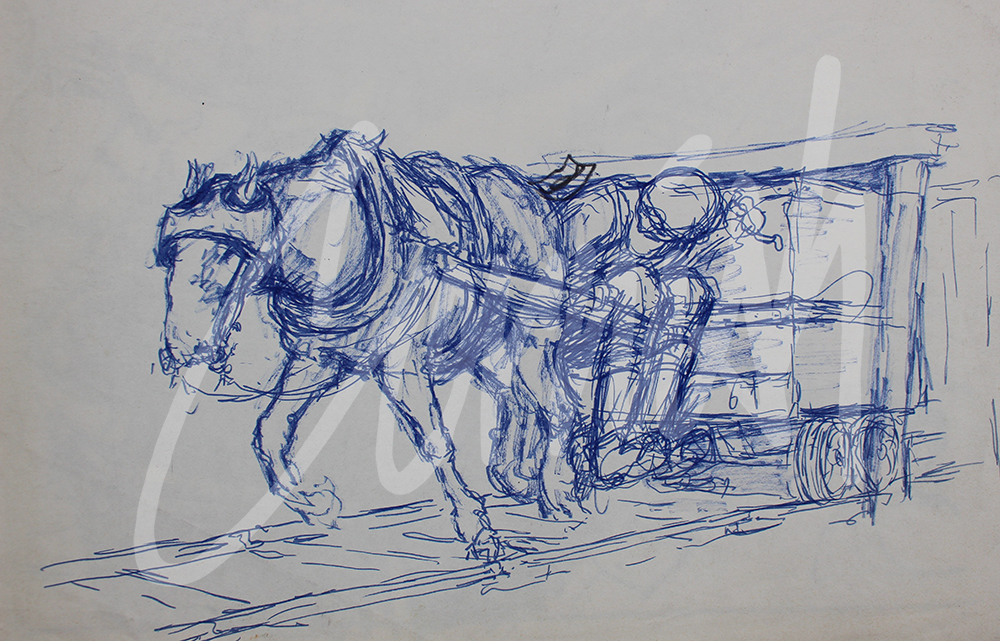
Cornish started work on Boxing Day 1933 aged 14 years. The landscape was dominated by coal mines in every direction and ‘The Times’ newspaper referred to County Durham as ‘little more than one huge colliery.’
In one sense, although denied the opportunity of continuing education, he was fortunate to gain work in a viable pit at a time when unemployment in the area reached 27% of the workforce. While the Dean and Chapter Colliery had no ‘disasters’ officially five or more killed together, by gas or explosion) the records of 177 fatalities meant that the mine was referred to as ‘the Butchers Shop.’ An ominous title for the 2,135 men working underground. A few years after the young Cornish started work, over 3,000 tons of coal were produced each day with two thirds of it hand hewn.
His first job when he was set on (a local term meaning to start work) was as a datal lad, paid at a daily rate, employed as a Pony Putter- sitting low on the limbers (wooden shafts connecting the pit pony to the coal tub) to avoid decapitation and sometimes ‘pushing the coal tubs.’
The dilemma for the young Cornish was that he was fascinated by aesthetics and a desire to record these moments, when simultaneously the mine owners were only interested in coal production. The drawings and paintings record a job which has passed into history.
All aspects of coal mining, the journey to and from work, the gantry, working underground, and life in mining communities, are featured in ‘Behind The Scenes: The Norman Cornish Sketchbooks’ available by visiting https://normancornish.com/shop
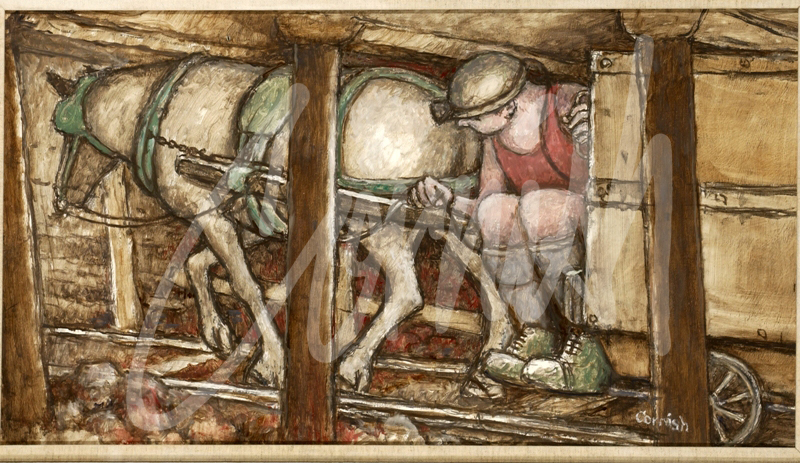
Behind The Scenes: The Norman Cornish Sketchbooks
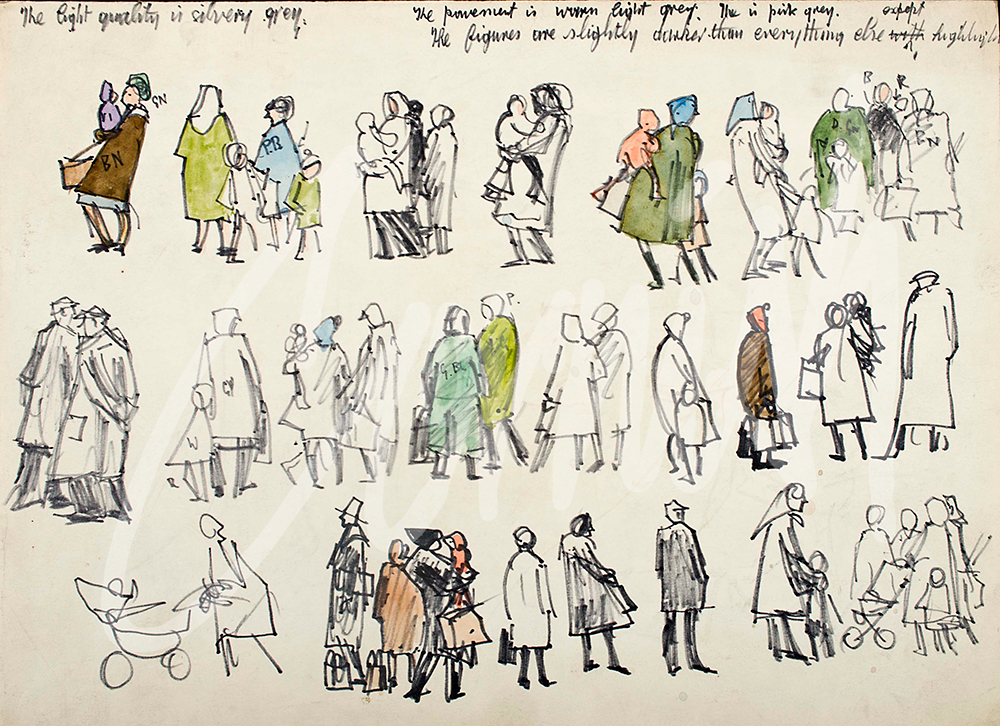
During 2016 we began a labour of love to complete the research and prepare the design of ‘Behind The Scenes: The Norman Cornish Sketchbooks,’ which was launched at the Durham Book Festival in October 2017, by author and family friend Michael Chaplin.
Copies of the book have gone to all parts of the UK including several book festivals, public lectures and in the past twelve months at exhibition venues during the centenary programme of events. We often receive appreciative comments about the book from those who have enjoyed looking at the development of Cornish’s work, and his personal thoughts published for the first time alongside many of his paintings and drawings. A small selection of comments follows:
This is a very well-produced book. Its balance of text and selected illustrative works gives it appeal both to the afficianado and to anyone as yet unfamiliar with Norman Cornish and his artistic legacy. The impetus for its publication now has been the availability of the rich archive that is his collection of sketchbooks. These show that, and how, he worked over images repeatedly and so illuminates the path that he took from original observation to finished work. They clearly testify to his great skill as a draughtsman and to the depth of the relationship he had with, and affection for, his subjects. The reproductions are excellent quality and are set out in sections according to subject matter. These are interspersed with quotations from Cornish himself and with short contributions from Art and History academics and people who knew him and his work personally.
There is a thoughtful and appreciative foreword by Melvyn Bragg, who, in his early TV career had done so much to raise the Cornish public profile. I thoroughly recommend this book to anyone interested in Art or Social History or in the culture of the north east region; for any interested in all three it is an absolute ‘must have’.
This is the most incredible book taking the hundreds of sketches by Norman Cornish, on their journey to the finished paintings. The sketches will enthral the reader, each of them a slice of a way of life that is past, but with a perception of the human condition which is timeless.
Copies of Behind The Scenes: The Norman Cornish Sketchbooks may be purchased by visiting https://normancornish.com/shop
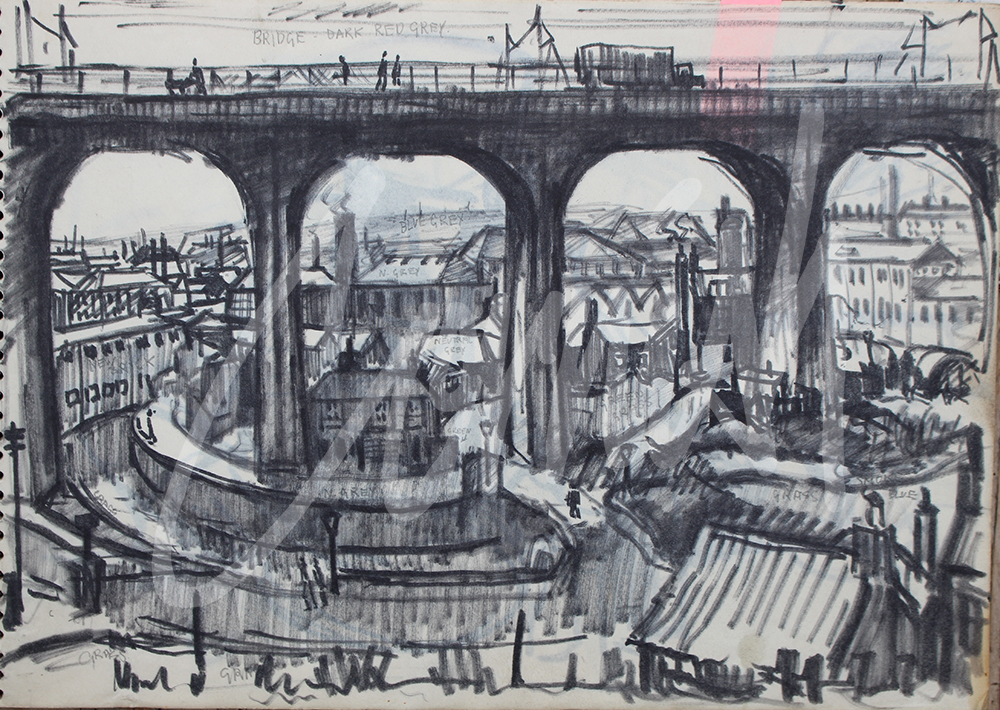
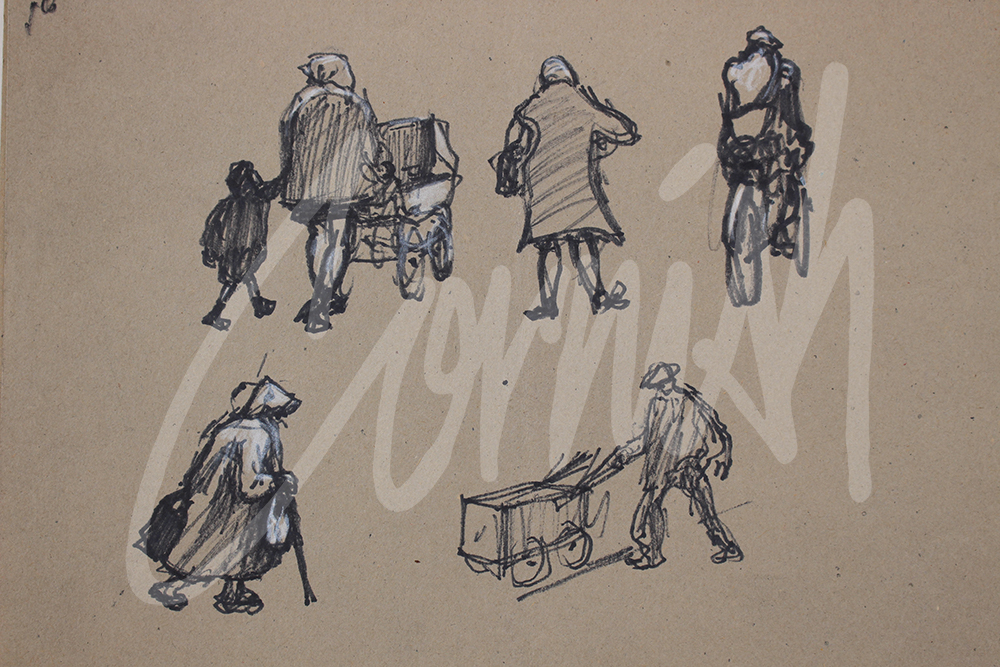
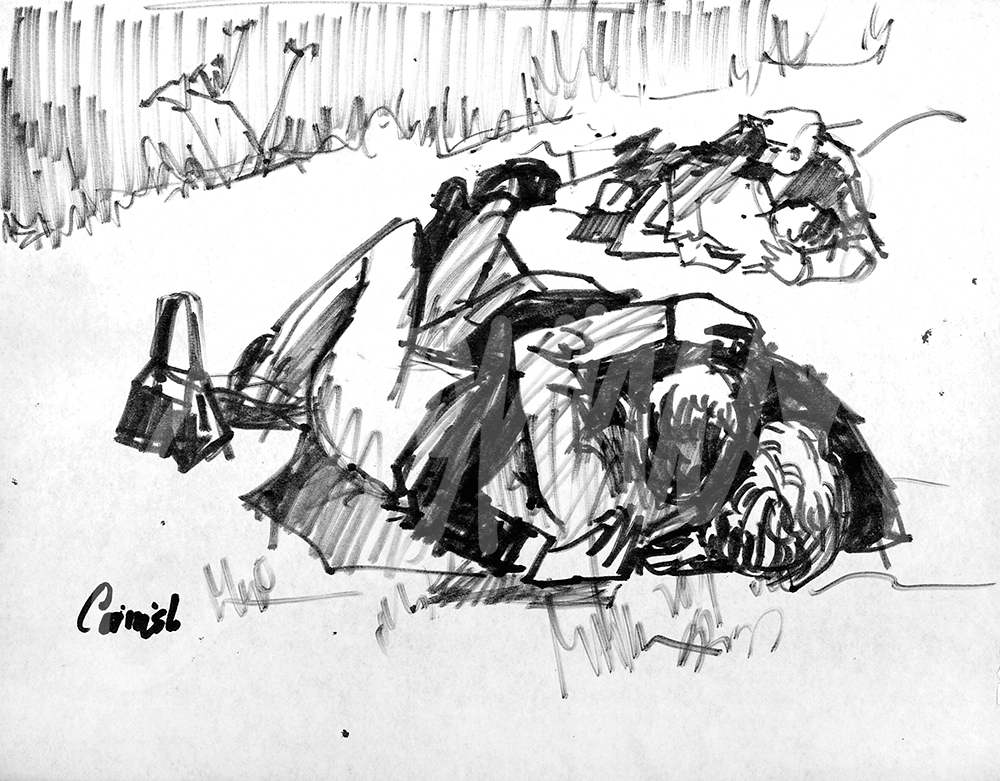
Train of Thought: from writer Michael Chaplin
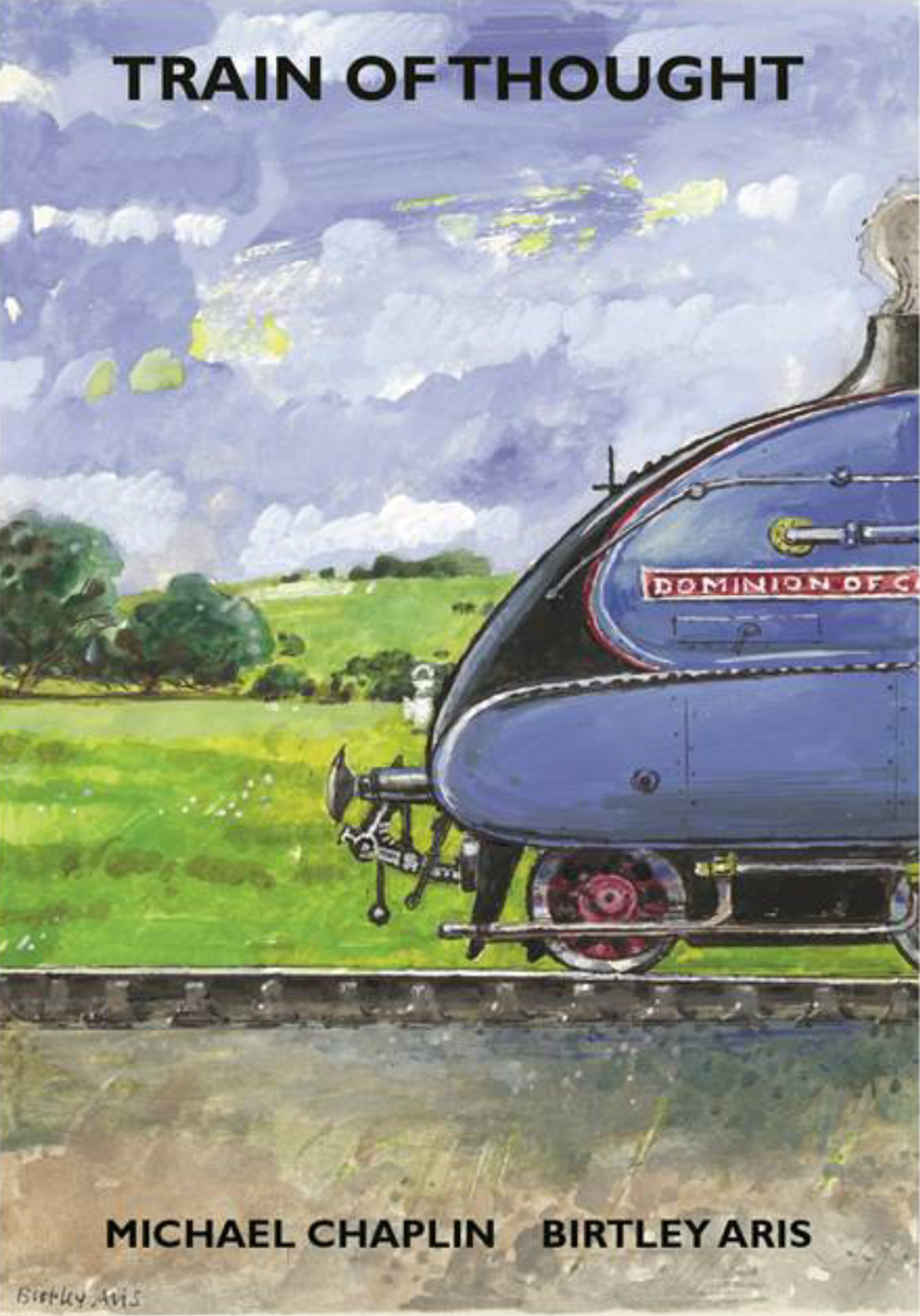
Greetings all.
This is just to say that my friend Birtley Aris and I published a little book a few months ago which you might possibly like to get your hands on.
To explain: halfway through lockdown we realised that among the many things we were missing was going places, especially on the iron rails. So I sat down and wrote an essay about the role of the railways in my life and their social and cultural impact on this country, this corner of it in particular. Birtley then created a series of fine illustrations to go with the words.
Our main motivation was to raise a little money for the Newcastle West End Food- Bank, where I’ve done a bit of volunteering in the past and seen for myself the growing demand for its services, especially over the last nine months. So far, 650 copies have been sold and over £7,000 raised.
'Train Of Thought' is a small book consisting of a 4,000 word essay written by Michael Chaplin and a series of delightfully evocative illustrations by Birtley. The price of the book is £5 plus the cost of first class post and packaging. If you would like to order a signed copy then email Michael at This email address is being protected from spambots. You need JavaScript enabled to view it. for further details and arrangements.
The Pier at South Shields
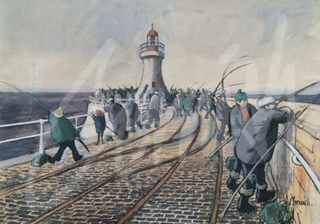
During the 50s and 60s the content of Cornish’s creative output was dominated by the subjects in his immediate surroundings; the industrial landscapes, the journeys to and from work, the pubs in Spennymoor, street scenes, observations of local characters and his wonderful record of the cultural landscape. He also exhibited alongside the work of other regional and national artists via the exhibitions at leading galleries in the north of England such as the Laing Art Gallery in Newcastle, The Shipley Art Gallery in Gateshead, Tullie House in Carlisle and The Stone Gallery in Newcastle, which emerged as the leading commercial gallery in the region during this era.
As a frequent visitor to Newcastle it was inevitable that the sights and sounds of Tyneside would begin to exert some influence on his choice of subject material. His first painting of people fishing at South Shields appeared in the Stone Gallery exhibition of 1967 which was shortly after his step towards becoming a professional artist.
The pier at South Shields was an obvious attraction for an artist interested in people and places. In his own words:
“ the people make the shapes, I am just the medium.”
The south pier at South Shields is 1,570metres long and combines the interesting curvature of the feature, along with the rail lines used in the construction of the pier in 1854. The anglers watching and waiting after casting their lines, were irresistible to Cornish, and the subject became a favourite that also offered what he considered as “a different theatre of operations.”
9 preparatory sketches of the pier and anglers in action, along with 3 completed paintings and a photograph including his wife Sarah, appear in Behind the Scenes: The Norman Cornish Sketchbooks. The preliminary work clearly illustrates the detailed research which he undertook to ensure technical accuracy as well as capturing moments in time.
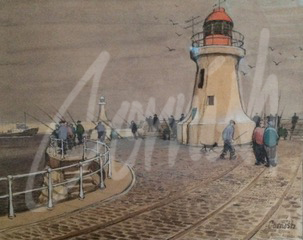
The Sailors’ Bethel
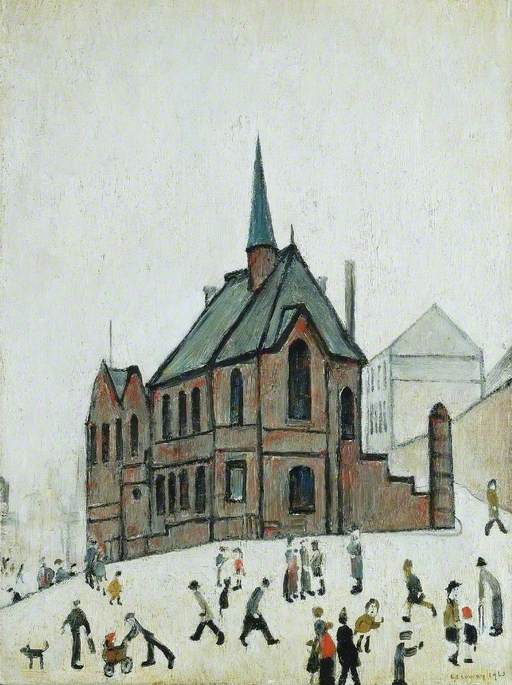
The Sailors’ Bethel opened in 1877 and can be seen at the Newcastle quayside. Bethel is Hebrew for ‘House of God’ and in the 130 years of its existence this building has served as a nonconformist chapel, a community centre, A Danish seamen’s church and more recently as offices.
In the late 19th century regular trade between Newcastle and Danish ports resulted in cargoes of butter, eggs, and fresh meat arriving at the mouth of the Ouseburn, and the Sailors’ Bethel was the ideal place for the Danish seamen to stay overnight whilst their cargo was unloaded.
During the 1960s the chapel became a subject of interest for both L.S. Lowry and Norman Cornish as contemporaries, exhibiting regularly at the Stone Gallery where Mick and Tilly Marsahll (owners of the gallery) acted as agents on behalf of both artists. Cornish used to visit the Stone Gallery at weekends and Lowry was a frequent visitor to the gallery although his accommodation was at the Seaburn Hotel near Sunderland. Both artists were active in and around Tyneside and the coast, deriving inspiration from people and places. Lowry painted his version of ‘Old Chapel’ in 1965 and the original is in the collection of the Laing Art Gallery. Lowry used his characteristic style, which he developed to suit the industrial and city subjects he generally painted, with a white background and limited palette of five colours: ivory black, vermillion, Prussian blue, yellow ochre and flake white.
Cornish first exhibited at the Laing Art Gallery in 1940 with his first portrait in oils, ‘My Sister Ella’. His version of the Sailors’ Bethel was only discovered in 2014 but was most likely produced during his journeys around Tyneside in the 60s.
Each version reflects the different styles and interpretation by both artists. With Cornish it is the rapid sketch capturing a moment in time using his Flo-master pen and watercolour added to the final version. With Lowry it was the attraction of the unusual architecture of the building. Similar subjects engaged both artists at different times in the Tyneside area, including All Saints church in Newcastle and the Groyne and Pier at South Shields.
According to Lowry, he generally invented the figures in his pictures. Cornish’s sketchbooks contain dozens of observations of people in different settings who often appear at a later stage in his paintings. 30 of Cornish’s drawings and paintings, inspired by locations in Newcastle and the pier at South Shields, feature significantly in Behind The Scenes: The Norman Cornish Sketchbooks which may be purchased at www.normancornish.com
